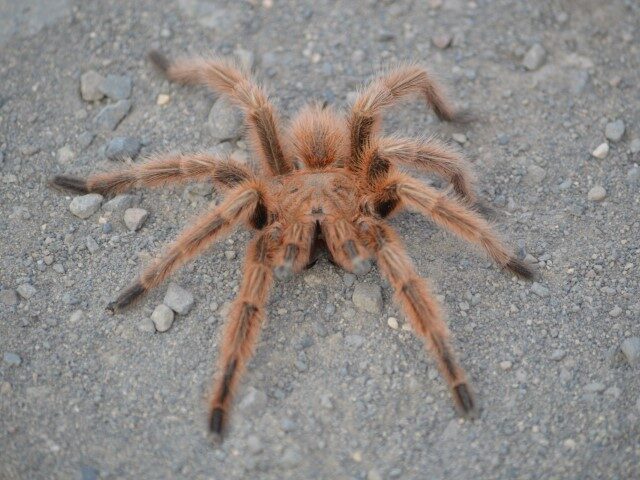Tourists from Switzerland experienced an accident Saturday in California’s Death Valley National Park when a tiny creature ventured onto the roadway.
The couple hit their vehicle’s brakes when they saw a tarantula skipping across CA-190 near Towne Pass, the National Park Service (NPS) announced in a news release Sunday.
To make matters worse, a Canadian motorcyclist in his 20s crashed into the rear of the couple’s camper van. He was quickly transported to a local hospital.
Following the incident, “the spider walked away unscathed,” NPS said.
An image shows one of the hairy creatures that live in the area:
CREEPY CRAWLY CRASH: Tourists brake for tarantula crossing road in Death Valley, causing motorcyclist to slam into their camper van https://t.co/57tGq9T2GM
— ABC7 Eyewitness News (@ABC7) October 30, 2023
“Tarantulas are so cool,” one social media user commented on the photo.
Now, a park official is urging visitors to drive slowly while enjoying the scenery, especially when going down steep hills in the area. Superintendent Mike Reynolds also noted, “Our roads still have gravel patches due to flood damage, and wildlife of all sizes are out.”
ABC 7 reported Monday the couple said they “Wouldn’t hurt a fly.”
According to the Lindsay Wildlife Experience in Walnut Creek, California, tarantulas got their name from an interesting source:
In the region surrounding the southern Italian town of Taranto, the locals believed that the bite from the wolf spider was deadly and could only be countered by performing a wild dance. Those bitten would jump and spin until they collapsed from exhaustion. The dance was called the Tarantella, and it is this name that eventually came to describe large hairy spiders the world over. It is now known that the bite from the European Wolf Spider is harmless to humans. It was most likely the bite of a local black widow species that was making people sick. But the name stuck, and as Europeans spread around the world they carried the name “tarantula” with them.
“There are now about 820 species of large hairy spiders in the world that carry this name, all in the family Theraphosidae,” the site reads.

COMMENTS
Please let us know if you're having issues with commenting.